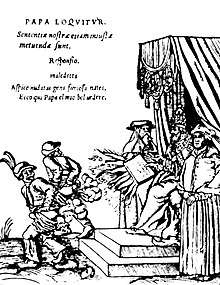Low culture
"Low culture" is a derogatory term for forms of popular culture that have mass appeal. Its contrast is "high culture", which can also be derogatory. It has been said by culture theorists that both high culture and low culture are subcultures.

Standards and definitions of low culture
In his book Popular Culture and High Culture, Herbert J. Gans gives a definition of how to identify and create low culture:
Aesthetic standards of low culture stress substance, form being totally subservient, and there is no explicit concern with abstract ideas or even with fictional forms of contemporary social problems and issues. ... Low culture emphasizes morality but limits itself to familial and individual problems and [the] values, which apply to such problems. Low culture is content to depict traditional working class values winning out over the temptation to give into conflicting impulses and behavior patterns.
— Herbert Gans, [5]
Culture as class
Herbert Gans states in his book Popular Culture and High Culture that the different classes of culture are linked correspondingly to socio-economic and educational classes.[6] For any given socio-economic class, there is a culture for that class. Hence the terms high and low culture and the manifestation of those terms as they appeal to their respective constituents.
Mass media
Audience
All cultural products (especially high culture) have a certain demographic to which they appeal most. Low culture appeals to very simple and basic human needs plus offers a perceived return to innocence,[7] the escape from real world problems, or the experience of living vicariously through viewing someone else’s life on television.[8]
Stereotypes
Low culture can be formulaic, employing trope conventions, stock characters and character archetypes in a manner that can be perceived as more simplistic, crude, emotive, unbalanced, or blunt compared to high culture's implementations—which may be perceived as more subtle, balanced, or refined and open for interpretations.
See also
- Bogan – Unrefined or unsophisticated person (Australian slang) (Australia and New Zealand)
- Burlesque – Literary, dramatic or musical work or genre
- Bread and circuses – Figure of speech referring to a superficial means of appeasement
- Camp (style) – Ostentatious style
- Chav – Stereotype of anti-social youth dressed in sportswear (UK)
- Cinema
- Culture industry – Expression suggesting that popular culture is used to manipulate mass society into passivity
- Dres (Poland)
- Flaite (Chile)
- Gopnik (Russia)
- Skeet (Newfoundland)
- Kitsch – Art or other objects that appeal to popular rather than high art tastes
- Lowbrow (art movement)
- Mass society
- Middlebrow
- Off-color humor
- One-Dimensional Man – 1964 book by Herbert Marcuse
- Outsider art – Art created outside the boundaries of official culture by those untrained in the arts
- Philistinism – Person whose anti-intellectual social attitude undervalues and despises art and beauty, spirituality and intellect
- Tribal art, also known as Primitive art
- Prolefeed – Newspeak term in the novel Nineteen Eighty-Four by George Orwell
- Raunch culture
- Redneck (United States)
- Toilet humour
- Yellow journalism – Sensationalistic news
References
- Oberman, Heiko Augustinus (1994). "The Impact of the Reformation: Essays". Grand Rapids, Michigan: Wm. B. Eerdmans Publishing. p. 61. ISBN 978-0802807328.
- Edwards, Mark U., Jr. (2004). Luther's Last Battles: Politics And Polemics 1531-46. Minneapolis, Minnesota: Augsburg Fortress. p. 4. ISBN 978-0-8006-3735-4.
- In Latin, the title reads "Hic oscula pedibus papae figuntur"
- In Latin mixed with some Italian at the end, the caption reads "PAPA LOQVITUR. Sententiae nostrae etiam iniustae metuendae sunt. Responsio. Maledetta Aspice nudatas gens furiosa nates. Ecco qui Papa el mio belvedere."
- Gans, Herbert (1999) [1958]. Popular Culture and High Culture: An Analysis and Evaluation of Taste. New York City: Basic Books. p. 115. ISBN 978-0465026098.
- Gans, pg. 7
- Tomasino, Anna (2006). Discovering Popular Culture. London, England: Pearson Education. p. 211. ISBN 978-0321355966.
- Mazur, Eric; Koda, Tara K. (2000). "The Happiest Place on Earth: Disney's America and the Commodification of Religion". In Mazur, Eric; McCarthy, Kate (eds.). God in the Details: American Religion in Popular Culture. Abingdon, England: Routledge. p. 307. ISBN 978-0415485371.